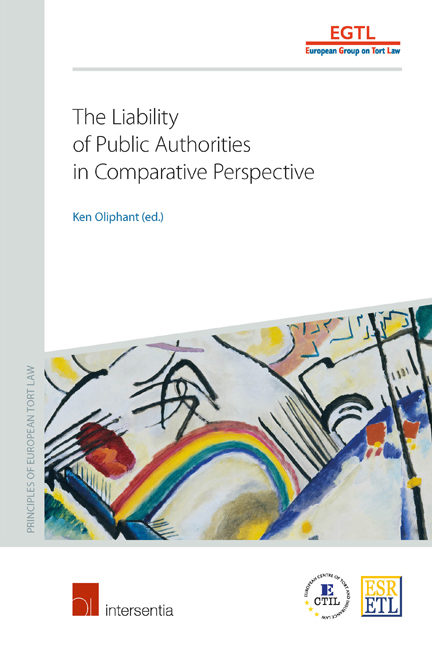Introduction
Published online by Cambridge University Press: 27 November 2017
Summary
CONTEXT
In the last decades, liability relating to public authorities (‘public authority liability’) has been one of the main focuses of development in and at the edges of tort law in Europe, with major reforms implemented or considered at national level, and a steady stream of major court decisions. During the same period, ‘Member State liability’ has also been recognised in the law of the EU, and the interplay of principles of national and EU law – and additionally the ‘just satisfaction’ jurisprudence of the European Court of Human Rights – evidently warrants close attention. It was against this backdrop that the European Group on Tort Law Group embarked on its investigation of public authority liability from a comparative perspective.
EXISTING STATE OF COMPARATIVE SCHOLARSHIP
Naturally, the importance of the topic means that several major comparative law studies have been undertaken in the area already. But the sheer pace of recent developments itself justifies the pursuit of further comparative research on the subject, and this was one of the considerations that led the European Group to embark on its own project on public authority liability. Irrespective of timing, it was also felt that what the Group would be able to produce would in any case have the potential to make a meaningful contribution to the existing literature. The Group's aspiration was to produce something more than merely a collection of conference papers and/or public lectures by embarking on a long-term and coordinated study that applied a common methodology to the description of public authority liability law in different jurisdictions, and sought to present information about each in a format that facilitates a point-by-point comparison between them. The resultant reports are contained in Part I of this book.
Further, it struck the Group as desirable to test and interrogate the information provided in these general accounts of public authority liability in different countries by inquiring into the application of the principles identified to concrete facts.
- Type
- Chapter
- Information
- Publisher: IntersentiaPrint publication year: 2016

